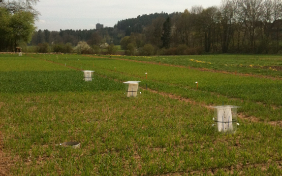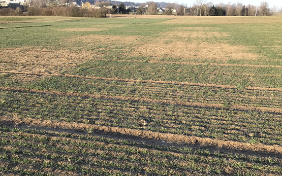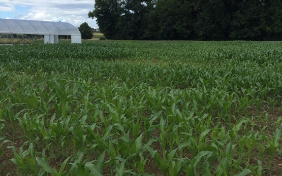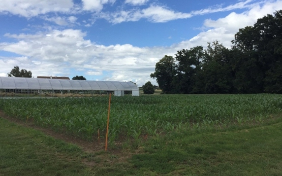At over 70 years of age, the ZOFE trial is the oldest of the long-term trials in Switzerland, and a classic fertilisation experiment. Originally designed to compare the impact of organic and mineral fertilisers on crop yields, today it focuses increasingly on topics related to soil ecology and climate, such as nutrient use efficiency of different fertilisers or long-term development of soil organic carbon in agricultural systems.

Trial Design
The trial was set up in 1949 in Zurich-Reckenholz on a Luvisol after a land-use change from permanent grassland. In a fivefold-replicated systematic block design, 12 fertilisation treatments are compared: an unfertilised control, three organic (e.g. manure or compost), four mineral (NPK in various dosages) and four combined (organic + PK mineral) fertilisation treatments. The plots are currently undergoing an eight-year crop rotation: winter wheat – maize – potatoes – winter wheat – maize – spring barley – two years of temporary ley.
Measurements
The topsoil is sampled annually at a depth of 0-0.2 m and bi-annually analysed for carbon, nitrogen and available macronutrients. Radiocarbon (14C) data as well as data on microbial biomass are also available. The main and by-products of the crops are used to determine yields and nutrient content, from which nutrient removals and budgets are calculated.
Land-use change from permanent grassland to arable farming resulted in a decrease in soil organic carbon for all fertilisation treatments, which was highest in the unfertilised control and lowest in the ‘combined fertilised’ treatments. The yields in the ‘combined fertilised’ treatments are similarly high to those in the ‘mineral fertilised’ treatments containing nitrogen. By contrast, organic fertilisation without the addition of mineral P and K results in lower yields.
Contact
Key data
Topic: Fertilisation
Site: Zurich-Reckenholz
Location: 47.426805, 8.518893;
438 m a.s.l.
Start year: 1949
Design: systematic block, 5 replications
Soil type (WRB): Luvisol
Soil texture: sandy loam (14% clay, 27% silt, 57% sand, 1.3% org. C)
Precipitation: 1050 mm
Temperature: 9.4 °C
Further Information
Last modification 17.10.2025













